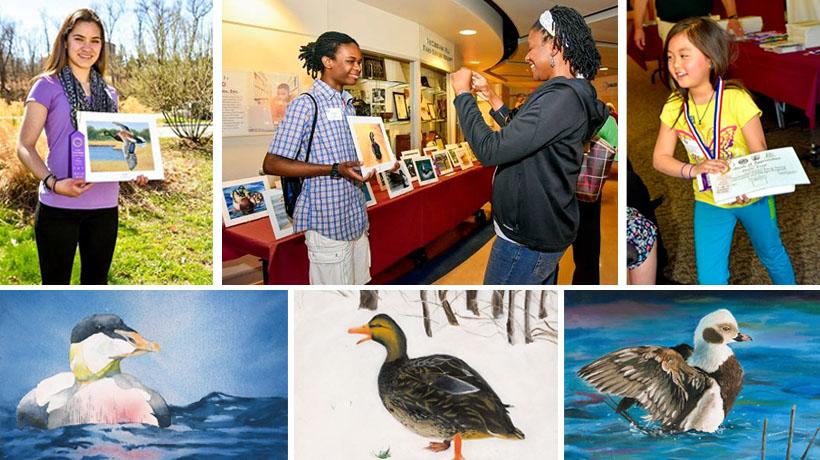History of duck stamps
Since 1938, the Federal Migratory Bird Hunting and Conservation Stamp or "Duck Stamp" has been required to hunt ducks or geese, although anyone can purchase a duck stamp. Funds generated from these stamps have helped restore and improve important wetlands, and the actual stamps have become collectors' items. Duck stamps are one of the most successful wildlife restoration efforts in the history of this nation!
Conservation through art
The Junior Duck Stamp (JDS) program, modeled after the Federal Duck Stamp, launched in 1991. Its goal was to grow awareness of the importance of preserving wetland habitats and the delights of wildlife. In 1992, the U.S. Fish and Wildlife Service printed the first ever Junior Duck Stamp. They used the funds to provide awards, incentives, and scholarships to students, teachers, and schools.
This dynamic program teaches wetland habitat and waterfowl conservation. Using scientific and wildlife observation principles, students communicate visually what they have learned by creating an entry for the contest. The pairing of these subjects brings new interest to both science and art and teaches greater awareness of natural resources. The art is judged in four age categories in a statewide competition, and the entry judged Best of Show moves on to represent Massachusetts in the national competition. Entries must be postmarked by February15 of each year.
In Massachusetts the Junior Duck Stamp Program is sponsored by MassWildlife and U.S. Fish and Wildlife Service, with support from the Massachusetts Sportsmen’s Council.
Junior duck stamp curriculum
Nationally, the Junior Duck Stamp Conservation and Design Program reaches more than 27,000 students each year, giving them the opportunity to learn scientific principles, connect with the natural world, and artistically express their knowledge of the beauty, diversity and interdependence of wildlife.
A redesigned educational curriculum has been developed to spark student interest in habitat conservation and careers in natural resources through science, art, math, and technology. The curriculum guides meet a number of national education standards, including the National Science Education Standards, North American Association for Environmental Education Standards and National Visual Arts Education Standards. Get more information from the U.S. Fish and Wildlife Service.
Support JDS by purchasing a stamp
The overall national winner of the art contest graces that year's JDS and is sold by the U.S. Postal Service (www.usps.com or 1-800-782-6724) and Amplex Corporation (www.duckstamp.com or 1-800-852-4897) for $5. All proceeds of the stamp are invested in the program to fund environmental education programs; award the students, teachers and schools that participate in the program; and to market the JDS program.
